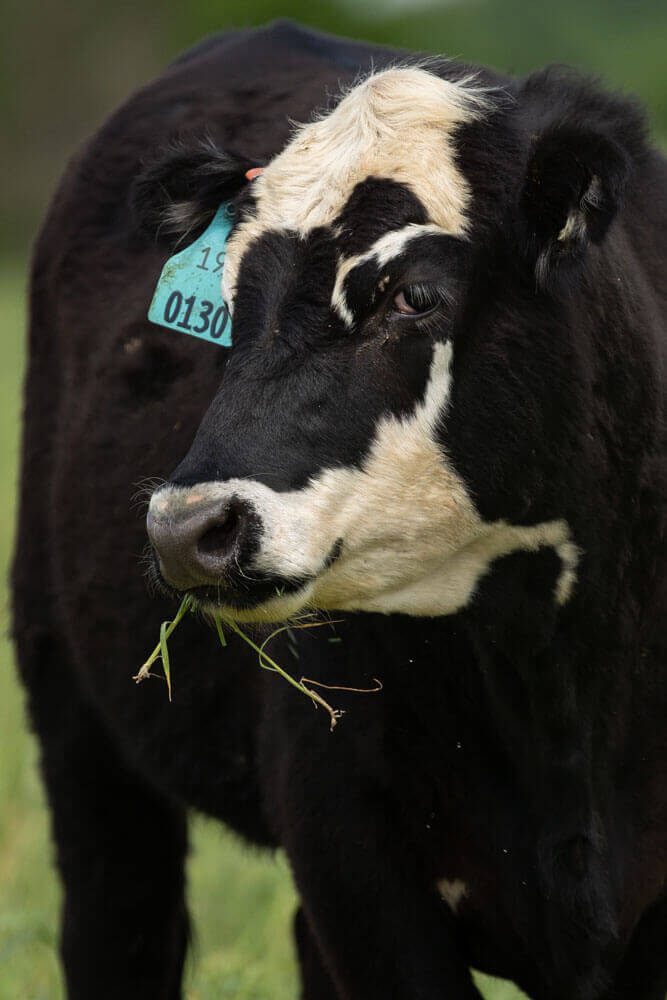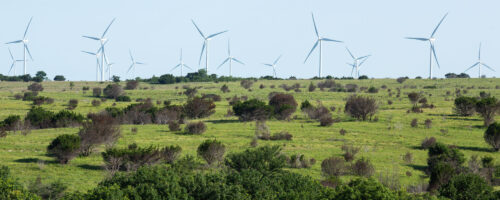As we move into the peak of the growing season, it’s time to evaluate our forage resources, rolling rainfall data and pasture utilization plans. Making those timely adjustments to our grazing management can save considerable economic and ecologic capital over the short and long term. However, in order to make those appropriate decisions, we need to fully understand grazing management metrics and how they relate to one another.
Understanding the following foundational and management metrics are key to intentionally managing any grazing enterprise. They can and will assist you in making better and more informed management decisions. Ultimately, knowing these metrics will help you better understand your operation. We cannot effectively manage what we do not measure.
Foundational Metrics
Stocking Rate
Foundational to any grazing enterprise is stocking rate — the number of specified animal units utilizing a unit of land. The unit of land is typically considered the ranch as a whole, and the rate is expressed as animal units per acre or section. Stocking rate is a function of demand and is a producer decision.

By comparison, a metric often confused with stocking rate is carrying capacity.
Carrying Capacity
This is the maximum number of animals that a unit of land/ranch can support while maintaining the management objectives of the unit. Carrying capacity is a function of supply. Each pasture will only produce so much forage. Although carrying capacity can be influenced by producer actions, it is not dependent upon a producer decision.
The other side of the forage/animal balance is animal demand.
Animal Demand and Animal Unit
Animal demand is the amount of forage required to support an animal unit based solely on animal-related factors, such as body size, percentage intake and the number of days grazing. In an effort to provide consistency, animal demand is typically calculated on the animal unit (AU) basis.
An animal unit is a 1,000-pound cow with a calf up to 6 months in age. Animal demand is generally expressed as a daily, monthly or annual forage requirement.
For instance, an annual forage requirement for one animal unit would be 1,000 pounds × 3% intake × 365 days = 10,950 pounds on an air-dry basis.
Animal demand is strongly influenced by the weight of cattle. Adjust the animal unit weight by adding in your cattle’s average weight to get a more precise animal demand for your operation (i.e., a 1,300-pound cow equals 1.3 AUs or 14,235 pounds annual forage demand).
Allowable Forage and Harvest Efficiency
When calculating the stocking rate, keen interest must also be paid to how much of the forage produced we allow to be grazed. We refer to this amount as allowable forage, and it is based on a harvest efficiency.
Most producers have heard of the “take half, leave half” rule of thumb. This rule of thumb states that if no more than 50%, or half, of the production is utilized, then the plant will remain healthy and no root growth stoppage will occur. The over-simplification of this rule of thumb has, at times, caused many operations to be overstocked. The problem arises when the decision is made to stock based on 50% of the forage produced. On rangelands, cattle are not the only forage consumers. Approximately 25% of the total annual production is utilized by other grazing (such as by grasshoppers and rabbits) or is lost to other factors such as trampling. The remaining 25% of the total annual forage is what should be used to calculate the stocking rate on rangelands. This is called a harvest efficiency and is always expressed as a percentage.
Most producers have heard of the “take half, leave half” rule of thumb. This rule of thumb states that if no more than 50%, or half, of the production is utilized, then the plant will remain healthy and no root growth stoppage will occur. The over-simplification of this rule of thumb has, at times, caused many operations to be overstocked.
Harvest efficiencies can be different rates for different forage types. For instance, we typically utilize 25% for rangelands but higher harvest efficiencies are often utilized on introduced monoculture forages like bermudagrass. Knowing the harvest efficiency, we can then calculate the allowable forage (for example, 4,000 pounds total production per acre × 25% harvest efficiency = 1,000 pounds per acre allowable forage for consumption by livestock). Multiply the allowable forage per acre by the total number of acres to get the total allowable forage for the operation. Dividing the total allowable forage by the total animal demand will give you a good estimate of carrying capacity and help you determine a proper stocking rate.
Grazable Acres
Once the carrying capacity is estimated, one more metric should be considered. A metric commonly overlooked is grazable acres. Not all of the acres on any given ranch are grazeable. Some acres have limited accessibility and lower production because of increased brush encroachment or excessive slope.
Other acreages that should be excluded due to limited or minimal production include the acres of surface water and ranch roads.
One mile of 20-foot-wide ranch road equals 2.4 acres. Adding up all the acres on the ranch that are inaccessible or are severely limited will aid in estimating a proper stocking rate. A proper stocking rate is one that has addressed grazable acres (i.e., 20 acres per AU initial carrying capacity ÷ 70% grazable acres = 28.5 acres per AU proper stocking rate).
Management Tools & Metrics
Once the overall proper stocking rate for a property has been established, several management tools and metrics can be utilized and measured to improve efficiencies, meet ecological outcomes and track progress.
Stock Density
Stock density is often confused with stocking rate. Stock density is the number of animals on a specific area for a specific length of time and is generally expressed as live weight per acre. Stock density is the concentration of animals, and that concentration can vary depending on the desired outcome.
For instance, if we have a proper stocking rate estimated at 10 acres per AU and we have a 1,000-acre property, that rate allows us 100 AUs. If those 100 cows continuously graze the 1,000 acres, we would have achieved a stock density of 100 pounds of live weight per acre (100 Cows × 1,000 pounds per cow ÷ 1,000 acres). If we were to subdivide that same 1,000 acres and we placed those same 100 cows on a 5-acre paddock, we would have increased the stock density to 20,000 pounds live weight per acre with no change to the overall stocking rate. Remember, if your cows are heavier than 1,000 pounds, adjust to their animal unit equivalent (AUE) (i.e., 100 animal units adjusted to 1,100 pound cows = 100 ÷ 1.1 AUE = 91 of the 1,100 pound cows).
Stock density can be utilized to meet ecological objectives, increase grazing utilization and increase recovery/rest periods.
Grazeable Days Per Pasture
One metric that is useful in developing a pasture utilization plan is grazeable days per pasture. This is an estimate of the number of days a particular herd can graze based on the amount of allowable forage in a given pasture.
Grazeable Days Per Pasture = (Allowable Forage Per Acre × Pasture Acres) / Daily Animal Demand # Herd AUs
Grazeable Days Per Pasture = (1,000 Pounds Per Acre × 200 Acres) / 30 Pounds Daily Demand
100 Cows
Grazeable Days Per Pasture = (200,000 / 30) / 100 = 66 Days
Ultimately when calculating the grazeable days per pasture, we will be estimating the total days each pasture can be grazed within the given year. When developing a pasture utilization plan, we will go through the process of allocating specific days to specific pastures. Given the number of times you would like to rotate through your pastures, allocate days that match the growing and dormant seasons, accordingly. Knowing the grazeable days allowable in each pasture is a key metric to understand.
Stock Days Per Acre
This is another metric useful to the intentional grazing manager. Stock days per acre can be used as a planning metric as well as a monitoring metric. Planning metrics are used to assess a resource and develop a strategic approach to utilize it. Monitoring metrics are used after a process has occurred to assess the outcome.
Although stock days per acre can be utilized to estimate production prior to a graze, I like to use stock days per acre as a tool to gauge the productivity of my individual pastures after they have been grazed. Essentially, they are an assessment of the actual productivity of each pasture given a desired utilization.
Stock Days Per Acre = Actual # Days Grazed × # Animals Grazed
# Acres in Pasture
Stock Days Per Acre = (3 Days Grazed × 100 Cows) / 25 Pasture Acres
Stock Days Per Acre = 300 / 25 = 12 stock days per acre
After each grazing year, add up the total number of stock days per acre for each individual pasture to provide an estimate of its overall value and importance to your operation. Some smaller pastures may have more stock days per acre than larger pastures; it’s simply based on the level of productivity and the ability of that pasture to recover and be utilized.



Comment